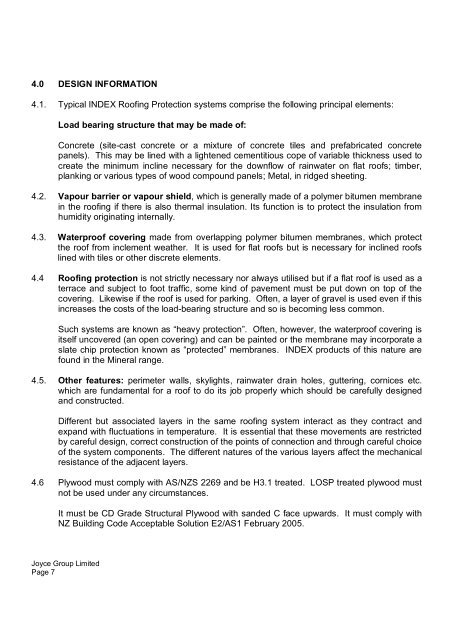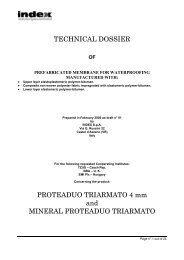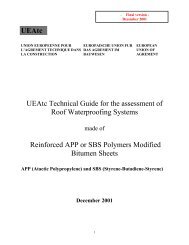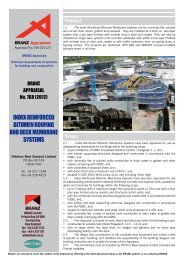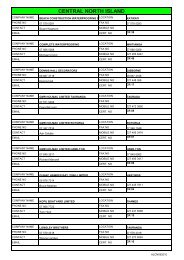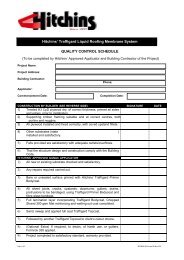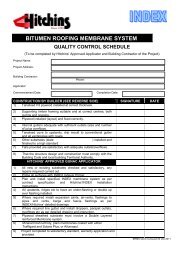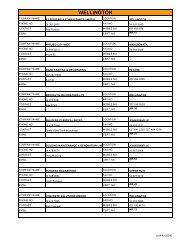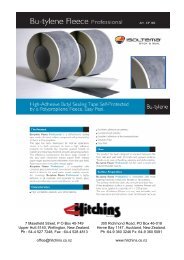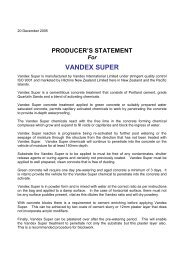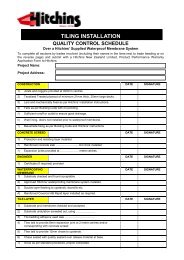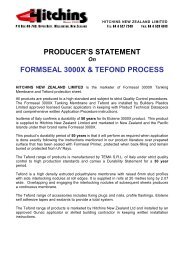VERIFICATION OF INDEX MEMBRANES FOR HITCHINS NEW ...
VERIFICATION OF INDEX MEMBRANES FOR HITCHINS NEW ...
VERIFICATION OF INDEX MEMBRANES FOR HITCHINS NEW ...
You also want an ePaper? Increase the reach of your titles
YUMPU automatically turns print PDFs into web optimized ePapers that Google loves.
4.0 DESIGN IN<strong>FOR</strong>MATION<br />
4.1. Typical <strong>INDEX</strong> Roofing Protection systems comprise the following principal elements:<br />
Load bearing structure that may be made of:<br />
Concrete (site-cast concrete or a mixture of concrete tiles and prefabricated concrete<br />
panels). This may be lined with a lightened cementitious cope of variable thickness used to<br />
create the minimum incline necessary for the downflow of rainwater on flat roofs; timber,<br />
planking or various types of wood compound panels; Metal, in ridged sheeting.<br />
4.2. Vapour barrier or vapour shield, which is generally made of a polymer bitumen membrane<br />
in the roofing if there is also thermal insulation. Its function is to protect the insulation from<br />
humidity originating internally.<br />
4.3. Waterproof covering made from overlapping polymer bitumen membranes, which protect<br />
the roof from inclement weather. It is used for flat roofs but is necessary for inclined roofs<br />
lined with tiles or other discrete elements.<br />
4.4 Roofing protection is not strictly necessary nor always utilised but if a flat roof is used as a<br />
terrace and subject to foot traffic, some kind of pavement must be put down on top of the<br />
covering. Likewise if the roof is used for parking. Often, a layer of gravel is used even if this<br />
increases the costs of the load-bearing structure and so is becoming less common.<br />
Such systems are known as “heavy protection”. Often, however, the waterproof covering is<br />
itself uncovered (an open covering) and can be painted or the membrane may incorporate a<br />
slate chip protection known as “protected” membranes. <strong>INDEX</strong> products of this nature are<br />
found in the Mineral range.<br />
4.5. Other features: perimeter walls, skylights, rainwater drain holes, guttering, cornices etc.<br />
which are fundamental for a roof to do its job properly which should be carefully designed<br />
and constructed.<br />
Different but associated layers in the same roofing system interact as they contract and<br />
expand with fluctuations in temperature. It is essential that these movements are restricted<br />
by careful design, correct construction of the points of connection and through careful choice<br />
of the system components. The different natures of the various layers affect the mechanical<br />
resistance of the adjacent layers.<br />
4.6 Plywood must comply with AS/NZS 2269 and be H3.1 treated. LOSP treated plywood must<br />
not be used under any circumstances.<br />
It must be CD Grade Structural Plywood with sanded C face upwards. It must comply with<br />
NZ Building Code Acceptable Solution E2/AS1 February 2005.<br />
Joyce Group Limited<br />
Page 7


